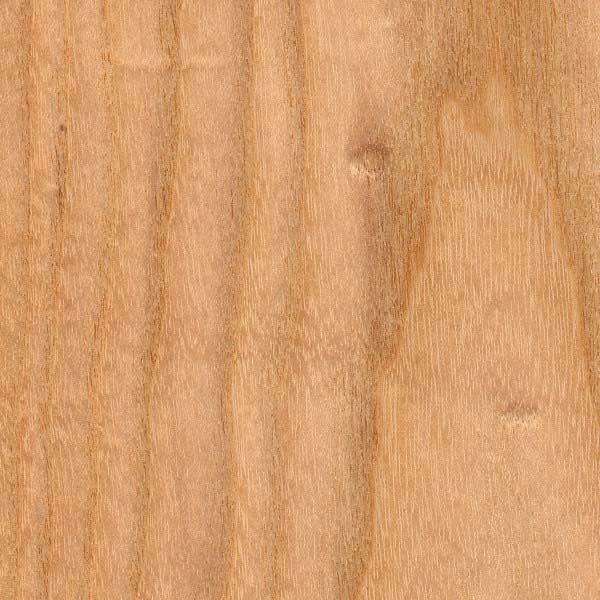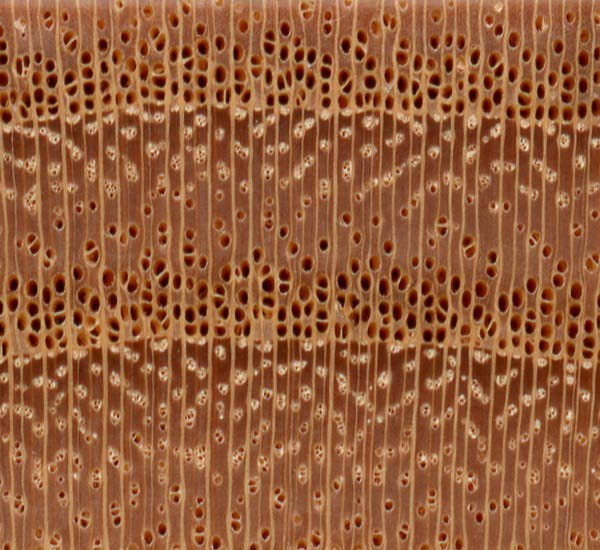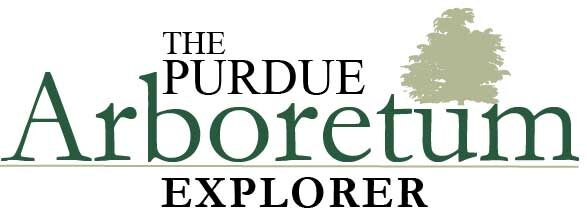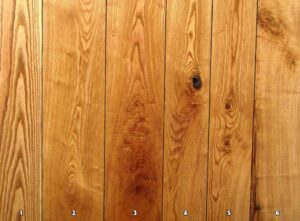Gymnocladus dioicus
Summary
Kentucky coffeetree or Gymnocladus dioicus, has a very wild, coarse grain pattern. It is typically a reddish brown to reddish orange color. In many boards, the growth rings tend to undulate or weave. When used for wall paneling, this species produces the coarsest and wildest pattern of any of our hardwoods.
Boards 1 and 2 are characteristic of the species. Board 1 has a very characteristic “V” shaped pattern, while Board 2 is slower growth and has a more subdued appearance. Board 2 shows several small pin knots. Board 3 shows the undulating growth rings and small pin knots and a very large knot near the bottom. Boards 4 and 5 show characteristic open and tight knots. The tree has a large pith and stubby branches. This seems to result in open knots such as the one shown in Board 4. Board 6 is quarter sawn and upon close examination, a small ray fleck will be evident. The large pith is seen at the bottom left of the piece.
History
The tree is medium sized to large and can reach 100 feet in height. The largest reported tree is about 5.4 feet in diameter at 4½ feet above the ground.
Color & Texture
The sapwood is a yellowish white and narrow. The heartwood is a reddish brown or reddish orange with a very prominent but straight grain pattern on flat sawn stock. The wood is ring porous like the oaks with the large pores plainly visible. The wood of the coffeetree is sometimes confused with honeylocust.
Anatomical and Microscopy


Ring-porous; 2-4 rows of large earlywood pores, numerous medium to small latewood pores, sometimes clustered, in wavy or tangential arrangement; tyloses absent; growth rings distinct; rays fine and not visible without lens; parenchyma vasicentric, and sometimes aliform (winged and lozenge), confluent, and banded, especially in latewood zones.
Wood Properties
- Workability
- Coffeetree is relatively dense and firm, and the wood has good working properties.
- Strength
- The wood weighs about 42 pounds per cubic foot or nearly as much as oak. Limited available information indicates the wood is similar in strength to the red oak group.
- Steam Bending
- No information available
- Drying
- No information available
- Shrinkage
- No information available
- Decay
- Moderately resistant to decay
Products
Coffeetree is mainly used for posts and railroad ties as it is moderately resistant to decay. But is also used for small runs of furniture, millwork, or paneling where it is important to have something that is different.

